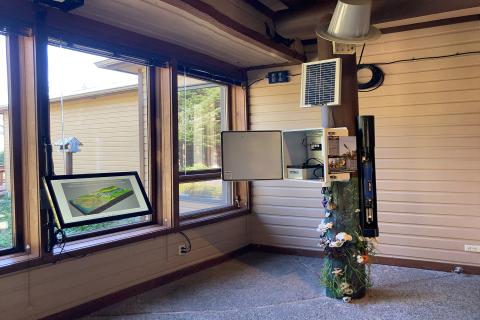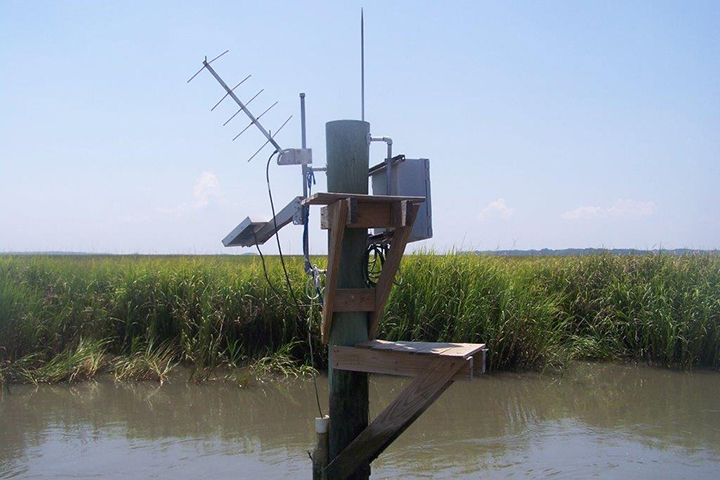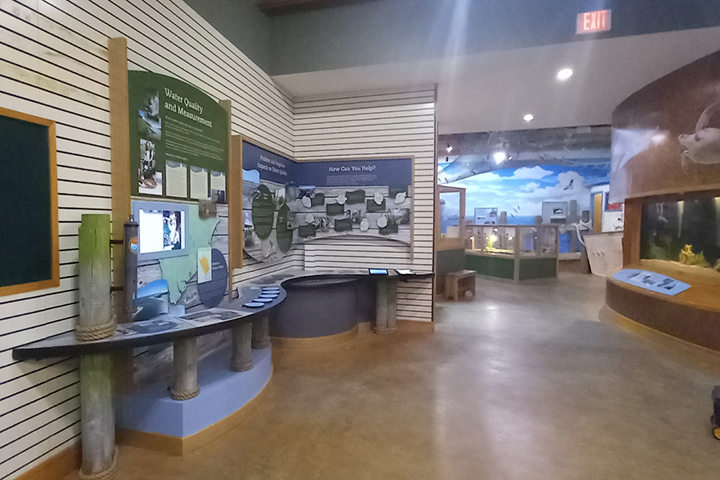
This project supported Reserves in providing effective water quality-related exhibits to visitors by developing a System-Wide Monitoring Program (SWMP) Exhibit Toolkit based on design best practices and the learned experiences of reserves and partners.
The project
Many people gain environmental knowledge from informal education sources such as the internet, television, parks, and museums. In the case of the National Estuarine Research Reserve System, visitors may engage in a number of activities that support self-guided learning — such as hiking trails, kayaking, and visiting exhibits — all without ever encountering a staff member. Onsite exhibits provide opportunities to educate visitors of all ages, as well as additional engagement for student or adult groups that attend an education program from reserve staff. Exhibits featuring System-wide Monitoring Program (SWMP) data can inform and engage visitors in water quality information that is locally relevant, site-specific, and inspires action.
Since 2019, the Reserve System’s education sector–which normally fulfills the interpretive task of designing and creating exhibits–has investigated the topic of exhibit design and evaluation by evaluating existing partner exhibits, sharing exhibit designs and contractors, and many other facets of exhibit creation. This project supported the development and implementation of a new SWMP-related exhibit at the ACE Basin Reserve, transferable digital SWMP exhibit content, as well as the development of a toolkit for reserves to improve existing SWMP-related exhibits. The toolkit, called the SWMP Exhibit Guide, organizes and consolidates content from a combination of literature reviews, SWMP data interpretation, and interviews and exhibit evaluations at multiple reserves into a comprehensive package of resources that is accessible to all education coordinators and exhibit designers in the Reserve System.
The impact
- All education coordinators and specialists in the Reserve System gain access to a roadmap for producing non-proprietary digital content for use in their own SWMP exhibits.
- Reserve staff are using exhibits and other self-guided interpretive resources to enhance the effectiveness of conservation messaging at reserves. Early visitor assessments at a participating reserve indicate that updated messaging is helping deepen visitor understanding of water quality and how human activities impact it.


